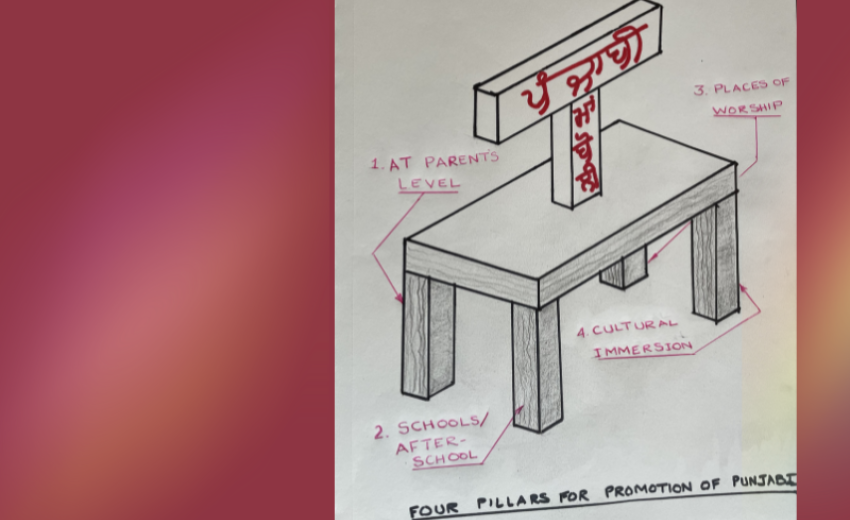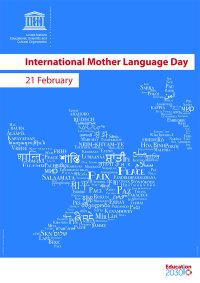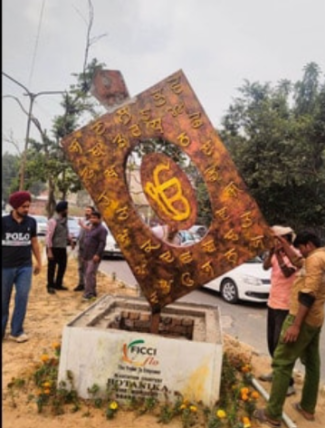Introduction
Like other years the International Mother Language Day falls on February 21, and it is time to lament on future of Punjabi language. Punjabi, the mother language of over 130 million is endangered today because of the apathy of the very people, claiming as Punjabi. Punjabis will proudly proclaim that they are “Punjabi by Nature;” but please do not expect them to patronize their mother language. The result is that it is not being taught, spoken, or propagated in the houses of Punjabis. If we look at it historically, the decline started after Sikh Kingdom was annexed by British in 1859. During the British rule English and Urdu were the official languages of business. The situation changed slightly when Indian subcontinent gained independence in 1947. The unfortunate tragedy was the division of Punjab at the time of independence which split the Punjabi speaking population on the either side of hastily drawn border. The two newly independent nations embarked on adopting a single native language as the national language in the name of integration and the single national identity became a political expediency. These nationalistic aspirations were casting shadows on the psyche of the masses. The push to promote the national language is actually costing neglect in learning of native mother languages. The results are Punjabi have labeled their mother language as “Paendu”, meaning language of rustics, farmers, laborers, and servants. The suave, educated and sophisticated in urban areas were quite happy to join in the nationalistic fervor on both sides of divided Punjab at the cost of Punjabi.
Soon the new fervor of going abroad for higher education plus looking for greener pastures thrust English at the forefront again. The consequences are that we find our mother language’s survival is at stake. It is pretty grim and scary news that should become a wake-up call for us. Upon stepping into these advanced countries, one is faced with the challenges of making it there, fitting there and becoming successful. In these new settings three points become the new reality, these are:
- Sudden reduction of people’s pool including opportunities to communicate with other speakers in native language.
- Assimilation pressures to fit in this new environment, makes us adopt the English as spoken there.
- The kids born or raised there do not get an opportunity to speak their mother language, as parents talk to them in English so that they can become proficient and excel in school. In fact, sometimes parents are trying to become themselves proficient in English by practicing with their kids.
The result is retaining fluency in mother language takes a back seat, lower on the totem pole of life’s priorities. This year 2024, UNESCO’s international Mother Language Day theme is 'multilingual education - a necessity to transform education.’ UNESCO encourages and promotes multilingual education based on mother language or first language. We need to take cue from UNESCO’s realization and galvanize to promote Punjabi. According to UNESCO every two weeks a language disappears taking with it an entire cultural and intellectual heritage. At least 43% of the estimated six thousand languages spoken in the world are endangered.
How do we reverse this downward spiral? Let us start with four basic ideas, surely there will be many more ideas. But here the motive is to make us think about it seriously.
Action Plan
- At Parents Level - We have to make a beginning at our homes first. Not only the parents should talk to each other in Punjabi, but also to their children. First the realization has to down that “Losing my mother language should feel like a serious risk.” For our children we need to realize that the risk to children’s future was higher as “Our language is our identity,” and we are losing it with our apathy. In fact, “It is not just our identity alone; it is our roots, our culture; our music, our food. It is everything, even its soil and aroma of its food. It is who we are.” If we claim that we are “Punjabi” but minus these, then our claim is shallow, for namesake alone. We don’t want our children to feel rootless that way. So, make an early start by talking in Punjabi. Why not start talking to the child in womb in Punjabi? If not, it is still best to start as early as possible after birth. Make sure, that the child exposed to it through daily activities, helping parents at home, through children’s TV programs, books in Punjabi and listening to stories at bedtime.
- Schools/After-schools– For Diaspora kids the official language of school instructions is English. Although, the picture in India/Pakistan is supposed to be different, but with our craze for English Medium Schools the situation is similar. In the remaining schools the emphasis is on Hindi/Urdu. The result is children whose native language is not Hindi/Urdu get deprived of getting the education in their mother language. The only way the impact of the system can be dented is by having an after-school program. The kids after school are brought to a convenient place of worship. There, under a trained teacher’s guidance the kids complete their school homework. Followed by a break cum refreshments time. After which they get to play with other kids whose mother language is the same as theirs. Here they are only permitted to communicate in their mother language. This way they can hone their mother language communication skills daily in a play setting.
- Places of Worship - Many places of worship have Sunday children’s classes to teach their mother language. This is a really good initiative and should be encouraged. However, this does not translate into proficient speakers and readers. As they are only exposed to the language for a few hours a week. Then for the rest of the week they are not using what they learned. Somehow, practice and implementation need to be included so that whatever is being learnt is retained and not lost over time. In addition, the institutions should arrange speech, debate, scripture reading and recital, cultural events for kids where they can hone their mother language skills. Also, once the children have successfully graduated there should be refreshers to ensure they are not unlearning Punjabi, because of lack of exposure.
- Cultural Immersion – This is the fastest and quickest way of experiencing and imbibing the cultural milieu. When one gets thrown in such an environment one feels that s/he needs to make drastic changes, to become a part of the new setting. Casting all pretentions, so called alien makes a deep dive into the cultural waters, getting wet in the process, and emerge out as a swimmer. Now s/he can tread on this cultural landscape without any inhibition. So, it is especially important that children in their formative years, especially from the diaspora, are afforded a cultural immersion process not just to experience the milieu but to experience that biological sense of belonging.
It is not always possible to get cultural immersion, but the other option is to make an effort to be part of cultural, religious, and literary events taking place in the place of residence. Speaking in Punjabi should be a matter of pride instead of carrying an inferiority complex or a guilty feeling.
Conclusion
Punjabi is what connects us to the land called Punjab. We consider it our land, land of parents and our ancestors. Punjabi is the language that can truly make us feel Punjabi at heart wherever we are. So, why get disconnected from it? When we get disconnected it makes us feel rootless, which is not a good feeling at any time, more so while growing up. Punjab is the land of five rivers with its language and culture dating back to the Indus Valley Civilization. The land expects its children to reclaim their mother language. We can make it happen by adopting a four point strategy listed above. Now add the fifth a COMMITMENT, born out of our concern for it. We will have to produce more quality content as books, movies, and songs in that language. If we want to have a meaningful relationship with our Guru it will be through Gurbani, and Gurbani can only be understood when we can read Gurbani. So Punjabi is essential for our spiritual journey as well. We can make it happen and prevent it from becoming an extinct language. Let us all make an effort to save our mother language by putting it on a new thrust and earning the moniker of “FROM ENDANGERED TO THRIVING.” In the process there will be a change within, as from Punjabi food by choice one will come an authentic Punjabi by nature who is fluent in Punjabi.
References:
- UNESCO Report: MOTHER LANGUAGE MATTERS: LOCAL LANGUAGE AS A KEY TO
EFFECTIVE LEARNING. 2008







